Electroconvulsive Therapy (ECT) is recognized by the National Institute of Mental Health as a successful treatment option for severe depression, bipolar disorder, some forms of schizophrenia, and catatonia.
What Is Electroconvulsive Therapy (ECT)?
At TrustPoint Hospital, we use electroconvulsive therapy (ECT) to treat severe symptoms of mental health concerns such as depression, dementia, schizophrenia, and psychosis. ECT induces a minor seizure that can help the brain reset itself, offering relief that is sometimes not possible with other treatments. ECT can be used to treat mental health concerns that are resistant to other forms of treatment, such as medication and psychotherapy. Electroconvulsive therapy can be:
- One of the quickest ways to relieve severe symptoms of mental health concerns like suicidal ideation and depression
- Used to treat a patient who is struggling with any stage of a mental health concern
- A safe and effective form of treatment for a variety of mental health concerns
- Used to increase the effectiveness of other treatment modalities a patient may be receiving
- Effective for months and even years after the completion of a course of treatment
- Especially effective when maintenance treatments are received after the initial course of treatment
Though ECT is often considered when other treatments like medications and therapy have not been effective, it can be a useful intervention when combined with other treatments or when patients wish to see fast results. Electroconvulsive therapy is a procedure that modifies the neural circuitry and chemistry of the brain. Receiving ECT can result in the following benefits, depending on the person:
- Fast response to treatment
- Optimal outcomes for those who have not responded well to other therapies
- Easing severe symptoms of mental health concerns
- Effective treatment for people like pregnant women who cannot tolerate strong medications
While ECT may not be suitable as a first line of treatment for all mental health concerns, its versatility and speed make it an intervention that can be helpful for many people who need effective mental healthcare.
Who Is a Good Candidate for ECT?
We are pleased to provide electroconvulsive therapy for adults age 18 and older who are experiencing severe symptoms of certain mental health concerns. ECT is a unique intervention that can help those who have not responded well to other types of treatments, such as medications and therapies. ECT is often used to treat those who have the following mental health concerns:
- Psychosis
- Catatonia
- Mania
- Schizophrenia
- Dementia
- Schizoaffective disorder
- Depression
- Bipolar disorder
An ideal candidate for ECT is a person who has received pharmacological and therapeutic interventions for a mental health concern but continues to experience distressing symptoms. ECT is very safe, and patients often see results quickly.
In addition to helping patients who have not responded well to other therapies, ECT can be used to supplement the therapies someone is already receiving. Specifically, ECT has proved effective in relieving the following mental health concern symptoms:
- Depressed mood
- Loss of interest in activities that were once enjoyed
- Weight loss or weight gain
- Sleep disturbances such as insomnia or oversleeping
- Feelings of hopelessness
- Low self-esteem
- Thoughts of death by suicide
How Is ECT Performed?
At TrustPoint Hospital, we have a designated electroconvulsive therapy suite that features state-of-the-art equipment and is staffed by professionals who are well-trained in delivering ECT. Throughout each patient’s treatment, we ensure their comfort and safety. The steps of the ECT procedure at TrustPoint include:
- Before taking part in ECT, each patient completes an evaluation that gives us insight into their medical history, symptoms, and therapeutic goals. Our team uses this evaluation to determine whether the person is a good candidate for ECT and to make sure that there are no potential risks for them.
- A team member goes over information about the procedure, including the potential benefits and risks. At this time, the patient can ask any questions and express any concerns.
- On the day of the procedure, we typically ask patients to fast before they receive ECT.
- In our ECT suite, we provide comfortable beds for patients to recline on when they receive electroconvulsive therapy.
- Before we provide ECT, we give each patient a muscle relaxant and administer general anesthesia.
- At TrustPoint Hospital, ECT is delivered by our team of professionals, including anesthesiologists, certified registered nurse anesthetists, respiratory therapists, and registered nurses who monitor each patient during the procedure to ensure their comfort and safety. We place electrodes on the patient’s scalp, typically on both sides of the head, although this placement can vary depending on the patient’s needs.
- ECT involves delivering a mild electrical current to the brain for a few seconds. This current induces a mild seizure in the brain. Our team monitors the patient’s vital signs and brain activity to ensure that the seizure lasts an appropriate amount of time and stays mild in intensity.
- When the patient awakens, they typically do not recall the procedure, which lasts only a few minutes. From start to finish, a patient is in our ECT suite for around an hour.
- Once the patient has recovered from anesthesia, a team member asks questions to determine whether there are any immediate side effects and make sure that the patient is doing well before letting them leave with a loved one. As they are recovering from the anesthesia, patients should have someone drive them home after the procedure.
- We typically advise patients to receive a series of ECT sessions over a span of several weeks. The frequency and number of these sessions can vary depending on the patient’s needs and response to ECT. Our team can work with each person to create a schedule that is most appropriate for them.
Common Misconceptions About ECT
When providers first started using electroconvulsive therapy, they didn’t have the understanding and research we have today. For this reason, people today still sometimes have misconceptions about what ECT is, how it is used, and what it does. The following are misconceptions about ECT along with clarification on why those misconceptions are outdated:
Misconception: ECT is painful.
Reality: While some people mistakenly see ECT as a painful treatment designed to aggressively rid people of their symptoms, it is actually a very controlled procedure that is administered within strict guidelines. Today, ECT is so mild that patients who receive it often do not recall the procedure when they wake up from anesthesia.
Misconception: ECT erases someone’s memories.
Reality: Due to the anesthesia used during ECT, a patient may experience brief memory impairment. For example, they may not remember the treatment or other events that happened close to the time of the treatment. However, these memories often return over time.
Misconception: ECT is only used to treat severe symptoms of depression.
Reality: While ECT is commonly used to treat severe symptoms of depression, it is also used to treat many other mental health concerns, such as schizophrenia, dementia, and mania.
Misconception: ECT is only used as a last resort.
Reality: ECT can be effective for some patients who have had little success with other types of treatments. However, it is not just a last resort. In fact, patients who are looking for simple and fast results often choose ECT as an intervention.
Misconception: ECT is an outdated treatment.
Reality: ECT has become a better-understood and well-researched treatment modality in the decades since its invention. Treatment teams today follow strict, regulated guidelines that are technologically advanced.
ECT Advancements
Electroconvulsive therapy was first introduced in the 1930s and was delivered very differently than it is today. In part, these differences can help people understand why ECT is sometimes a misunderstood intervention. Researchers, scientists, and behavioral health professionals have worked together to improve ECT in the following ways:
- Today, ECT is a more targeted treatment with shorter electric pulses, which reduces side effects like short-term memory loss.
- Anesthesia dosing advancements and medical monitoring have increased the patient’s safety during ECT.
- ECT providers receive specialized ECT education through training programs and residencies.
- Institutions that provide ECT have adopted policies of informed consent, including education for patients on what to expect.
Today, around 100,000 people receive ECT each year. For patients who are experiencing suicidal ideation or have medical conditions that prohibit their use of medications, ECT can be a life-changing intervention. Receiving ECT can also benefit people who are looking for fast and effective treatment for a variety of mental health concerns.
At TrustPoint, our well-trained staff provides ECT on an inpatient or outpatient basis, depending on the needs of the patient. While we generally recommend that patients receive six to 12 treatments, the number of treatments necessary for each person depends on their symptoms, therapeutic needs, and response to ECT.
This content was written on behalf of and reviewed by the clinical staff at TrustPoint Hospital.
To view this embedded video, please edit your cookie preferences and allow Performance & Functionality cookies.






